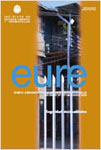Measuring the perception of insecurity in low-income areas
DOI:
https://doi.org/10.4067/S0250-71612006000300002Keywords:
quality of life, citizen securityAbstract
Urban safety has become a key issue for life in the city. A strategy that may positively affect quality of life is the urban design of public spaces; however, previous efforts have not been based on hard data, hampering a serious evaluation of alternative solutions. This work discusses the methodology and primary results of a study geared to quantify the perception of safety in low income areas, and how this is affected by the spatial arrangement of neighborhoods. We are interested in quantifying the effect of spatial variables regarding the feelings of fear associated with the use of public space, with the objective to evaluate policies to improve security based on hard data rather than unproven speculation. We designed and implemented a stated preference survey to measure the relative perceptions of insecurity experienced by residents traveling through specific neighborhoods in Santiago. The relative importance of each variable was determined using flexible discrete choice models. Results suggest that the proposed approach could become an efficient technique for the evaluation of urban safety policies.Downloads
Published
How to Cite
Issue
Section
License
Copyright (c) 2006 Revista EURE - Revista de Estudios Urbano Regionales

This work is licensed under a Creative Commons Attribution 4.0 International License.
Al momento de aceptar la publicación de sus artículos, los autores deberán formalizar la cesión de derechos de autor a EURE, según las condiciones establecidas por la Revista.
Ésta establece que el autor autoriza a EURE de manera gratuita, exclusiva e ilimitada a reproducir, editar, publicar, distribuir, publicitar, comercializar y traducir el artículo, a cualquier soporte conocido o por conocer y desarrollar.
Del mismo modo, los autores aseguran que el artículo propuesto es original, no publicado y no propuesto para tal fin a otro medio de difusión.


